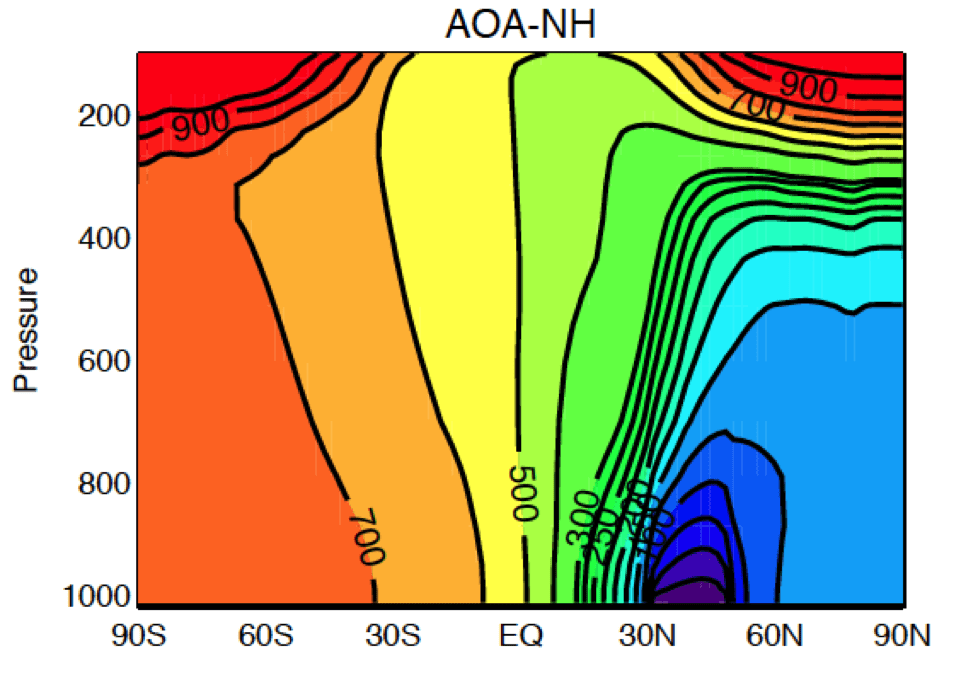
The tropospheric distributions of chemically and radiatively important constituents such as ozone, water vapor, carbon dioxide, and aerosols are strongly influenced by transport, and quantifying this transport is central to understanding and predicting air quality and climate change. We are using trace gas measurements and model simulations to quantify the transit-time distribution (TTD) for transport from NH populated regions.
- Yang, H., Waugh, D.W., Orbe, C., Patra, P.K., Jöckel, P., Lamarque, J.-F., et al., 2019. Evaluating simulations of interhemispheric transport: Interhemispheric exchange time versus SF6 Geophysical Research Letters, 46, 1113–1120.
- Yang H., D.W. Waugh, C Orbe, G. Zeng, O. Morgenstern, D.E. Kinnison, J-F Lamarque, S Tilmes, D.A. Plummer, P. Jöckel, S.E. Strahan, K.A. Stone, and R. Schofield, 2018, Large-scale transport into the Arctic: the roles of the midlatitude jet and the Hadley Cell, Atmos. Chem. Phys.
- Orbe, C., Yang, H., Waugh, D. W., et al., 2018, Large-Scale Tropospheric Transport in the Chemistry Climate Model Initiative (CCMI) Simulations, Atmos. Chem. Phys., 2018, doi.org/10.5194/acp-18-7217-2018
- Waugh, D.W., et al. Tropospheric SF6: Age of Air from the Northern Hemisphere Mid-latitude Surface , JGR, 118, 11429-11441, 2013 2013
- Holzer, M., and D. W. Waugh (2015), Interhemispheric transit-time distributions and path-dependent lifetimes constrained by measurements of SF6, CFCs, and CFC replacements , Geophys. Res. Lett., 42, doi:10.1002/2015GL064172.
See more tropospheric transport papers.
